Getting on top of grass
- More surplus paddocks to be cut
- Reducing number of grazing groups to 2
- Calves will be turned out to grass this week
Ed measured grass on 25th May. After entering the figures into Pasturebase it showed that he had a farm cover of 872 kg DM/ha and 24 days ahead on the farm. The targets are to have a farm cover of 700-800 kg DM/ha and 12-14 days ahead so he has decided to cut surplus paddocks to ensure grass quality remains good for grazing. He selected the 4 strongest paddocks to take out for silage and this reduced his farm cover to 742 kg DM/ha and to 17 days ahead on the farm. As the re-growths are slow on the paddocks that were cut for silage, despite receiving 1 bag of 0-7-30/acre and 27 units of nitrogen/acre, he is happy to stay at 17 days but will be walking the farm next week again.
There are currently 3 groups of yearling bullocks grazing on the farm so he plans to combine these into 2 groups when they are finished grazing their current paddocks so that they move through paddocks quicker, which will help speed up re-growths.
The ‘Black Field’ is the biggest paddock on the farm at 1.62ha and it is quite heavy in nature. The grass is older there too and smaller groups are spending a long time grazing out the entire paddock, with a lot of work for Ed in moving reels ahead and behind them. Therefore he has decided to split the paddock in 2 to help reduce workload with temporary fencing and to improve grass utilisation in the field.
33 of the 2023 dairy beef calves are weaned and are eating silage and ration in the slatted shed on the home farm. Ed has decided to turn them out to grass as the weather is settled, so he will give them a few days in a paddock near the yard to get used to the electric fence and to eating grass. He’ll then move them to the out farm in Boherbue and hopes this will avoid any setbacks in them, or any running through electric fences.
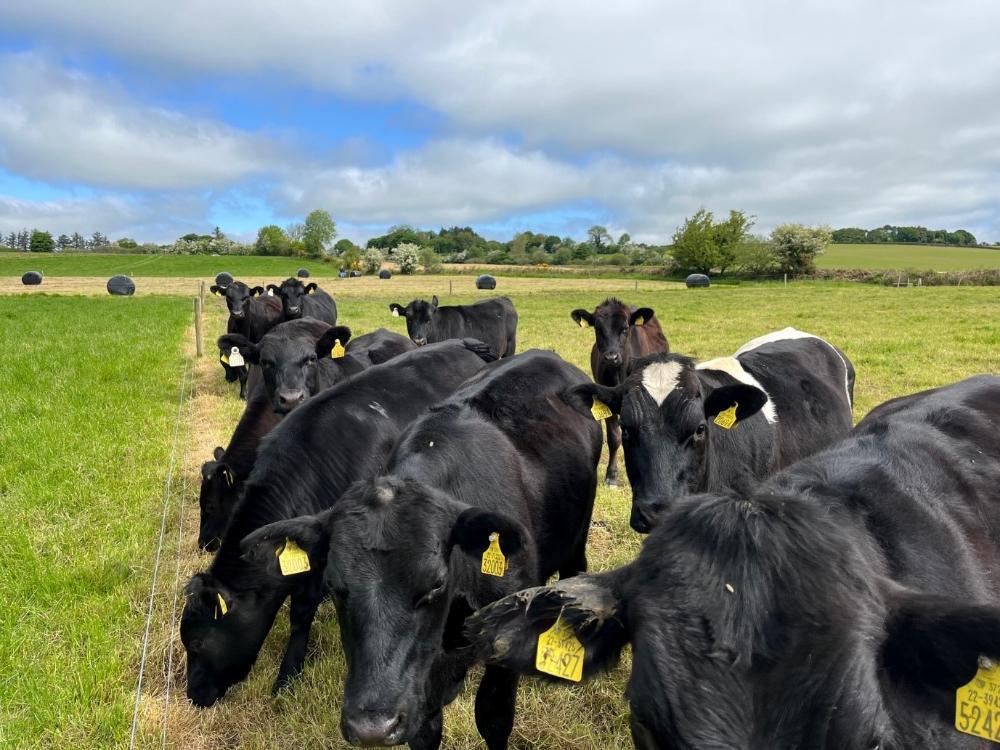
Figure 1: Bullocks grazing out a paddock with surplus bales made in the background
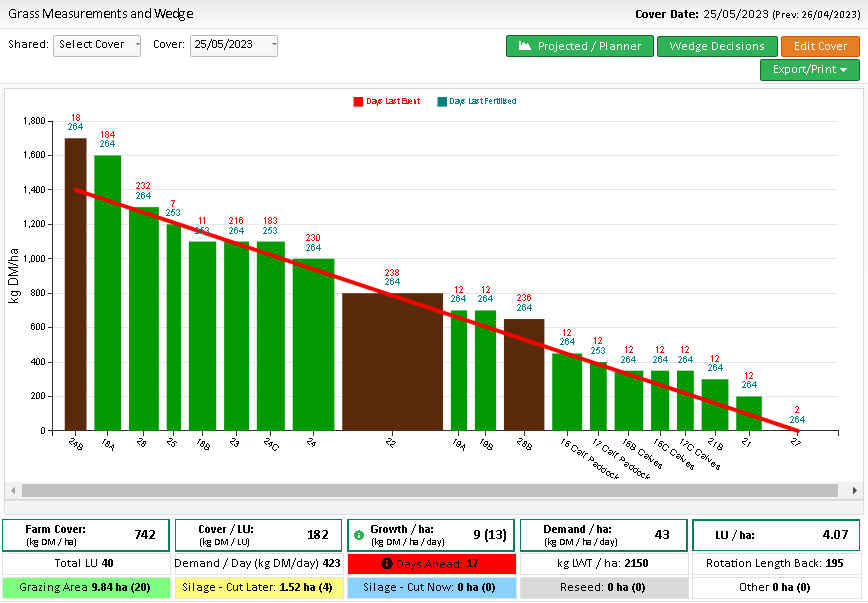
Figure 2: Grass wedge on 25th May 2023
Ed has been updating his fodder budget since his first cut of silage has been completed. He began cutting on 13th May on the home farm and made 158 bales. On 18th May he made a further 41 bales of silage and on 23rd May made 74 bales. This resulted in an average yield of 9.6 bales/acre.
Surplus paddocks also had to be cut in Boherbue on 13th May and he yielded 66 bales in total. The average yield was 8.3 bales/acre.
According to his fodder budget on PastureBase, Ed will require 520 bales of silage for next winter. After making 339 bales in the first cut, he now has to make 181 bales in the second cut. At an average yield of 7 bales/acre that means he will have to close at least 26 acres for silage which is not an issue for him.
By cutting early, he is targeting a silage DMD of over 72% to reduce the amount of ration required next winter. The bales are stacked 3 high in the yard as effluent facilities are available. However under new Good Agricultural Practice regulations from the Department of Agriculture, Food and the Marine bales should not be stacked more than 2 bales high if effluent collection facilities are not available.
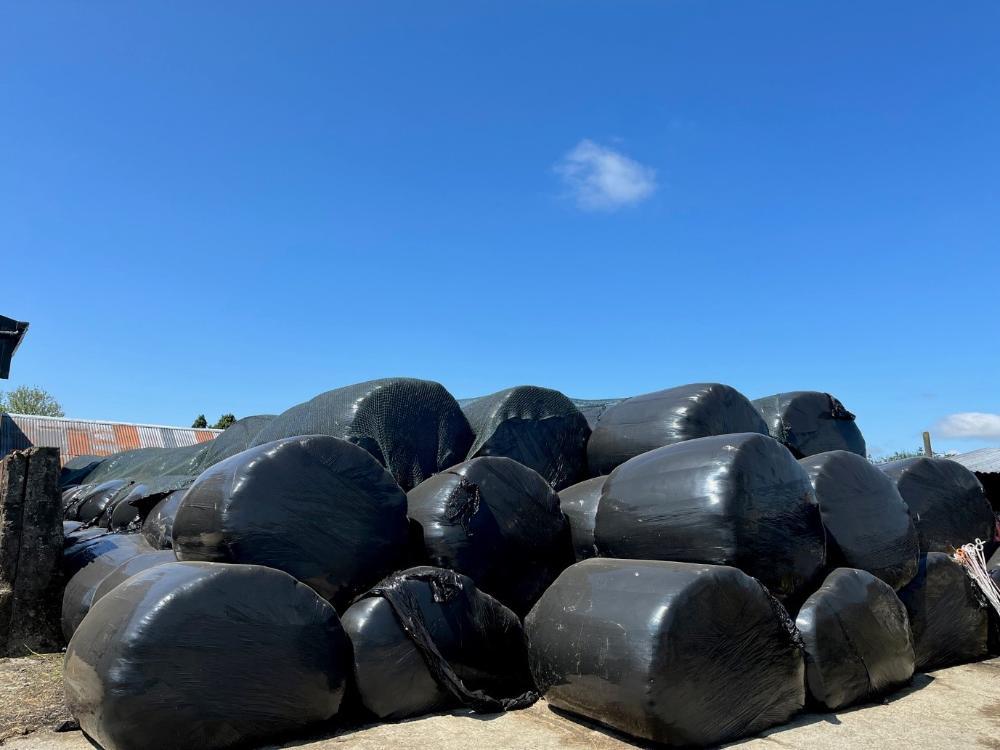
Figure 3: First cut silage bales stacked in the yard for next winter
The autumn born heifers (10) were weighed on 22nd April and they averaged 315kg, having gained 1.15 kg/day since birth. The average date of birth was 24th August 2022.
The autumn born bulls (13) averaged 321kg, after gaining 1.23 kg/day since birth. Their average date of birth was 10th September 2022.
Ed is planning to sell the weanlings at an upcoming E & U grade sale in a local mart.
The suckler cows were also weighed and they averaged 683kg, with a weaning efficiency of 41% which is close to the target of 42%.
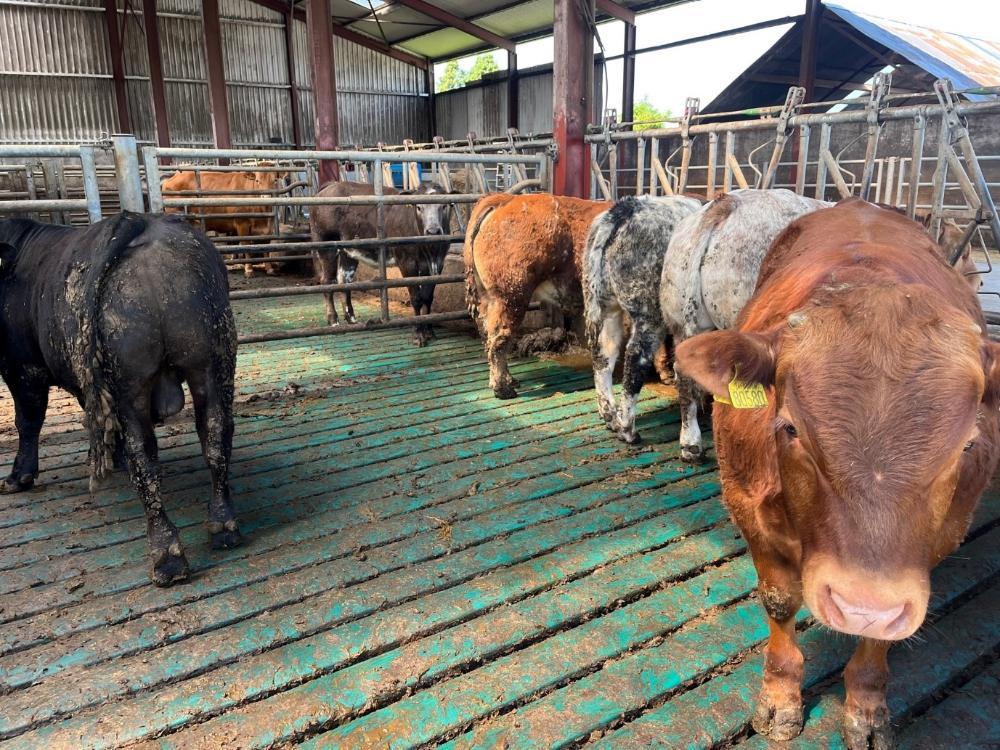
Figure 4: Some of the weanling bulls
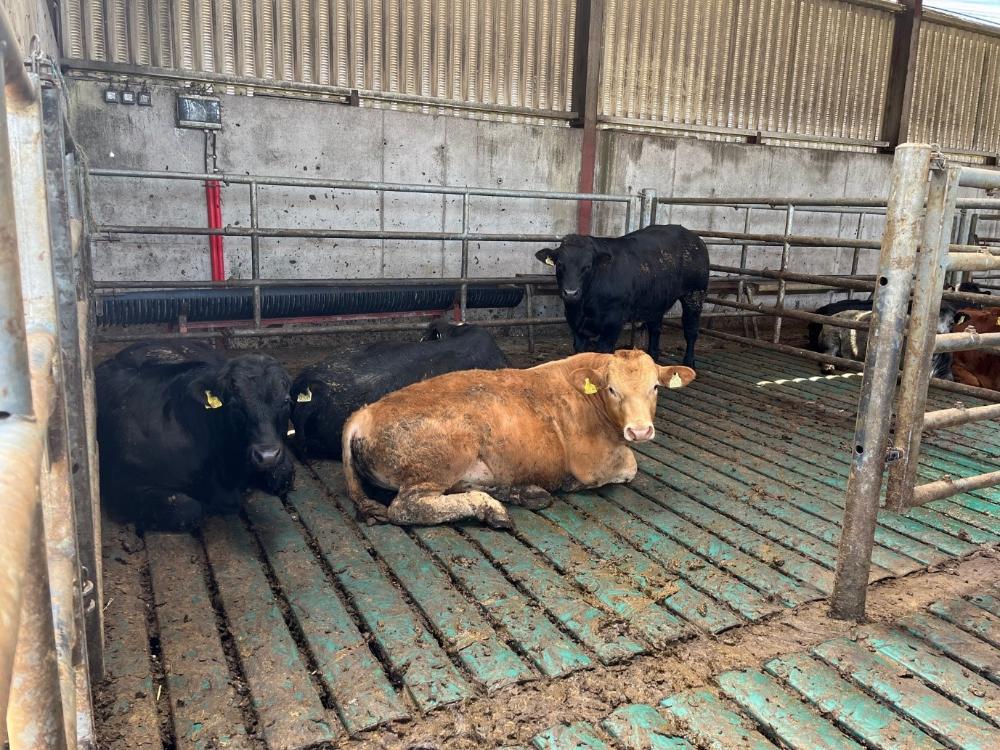
Figure 5: More of the weanling bulls